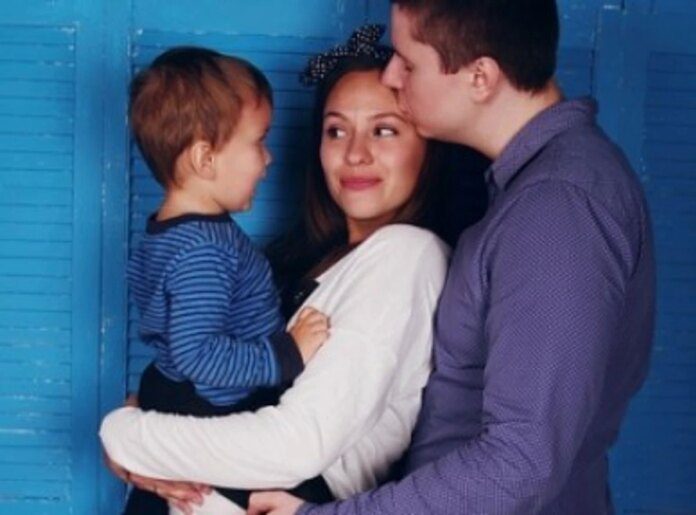
What is the child’s attachment to the mother and how is it formed?
Attachment is a form of strong emotional connection. It is formed over long periods of time. As far as the parent-child relationship is concerned, the purpose of attachment is to obtain and preserve the emotional security that the child needs to survive.
The relationship that the child develops with the main attachment figure (which is not always the mother, but the person who takes care of him in the first years of his life) is representative of how he will be formed from an affective point of view and will influence his whole life, in all its aspects (school performance, success in life, self-esteem, relationships with peers and especially the couple relationship). Attachment can be both positive (safe or secure attachment) and negative (anxious, avoidant, disorganized).
Fortunately, these categories are not perfectly distinctive and most of the time there are combinations between secure attachment and the others, so no matter how avoidant or anxious we grew up, each of us also has a secure part in us, a healthy attachment that – we formed with someone around us.
In the first years of life, physical touch is extremely important. Without physical touch, the brain loses its functions and will not be able to develop normally.
The children cry, and the parents take them in their arms, caress them, talk to them, they calm down, and thus begins a dance of love between the two or three, through which the child learns to trust his parents because they can fulfill his needs he cannot fulfill them alone. As he gains trust in those around him, he calms down and learns to communicate, the parents are also happy.
This effective base is formed through the senses – the child is touched, and caressed, he feels the strength and energy of the parent, the way he walks (surely or hesitantly), he feels the tenderness of the hug, of the voice, he connects with the smell of the parents, with their heartbeat and respiratory. Through touch, the child “reads” nonverbal and para verbal and “learns” who his parents are, recognizes them, and reacts in a personalized way to their presence in relation to other people.
I think there are two extremes here: parents who never keep their baby in the stroller so they don’t feel far from them (there is this movement regarding babywearing) and parents who only keep their baby in the stroller and not a few times sometimes I was given to see mothers in the park whose children were crying hysterically in the stroller, and the mothers very calmly walked by them slowly pushing the stroller, not caring about the state of discomfort or a need expressed by the crying baby.
In the long term, the cortisol (stress hormone) that appears in the brains of these little ones during those terrifying moments for them affects a lot of mental processes, and the result, over time, is that we will be dealing with an anxious, fearful child in general ( because he learned from a young age to be afraid of those around him because they do not understand him and cannot fulfill his needs), not confident in himself (something that will affect his ability to learn, concentrate or to manage their emotions later).
I think we need a balance. As I said above, there are two extremes at present. I don’t think it’s good to see things in two colors. I agree as much as I can about babywearing, but I don’t think it’s all there. The parent-child relationship is much more complex than that. What should these parents take care of? Do not instill in the child the idea that the world is a dangerous place and that they should be afraid to go down and explore, and the second aspect that must be taken into account is that of the mother or the person carrying it being overworked.
There are strollers and they do no harm to their child if they also put him in the stroller when they can no longer hold them. Also, the reciprocal refers to parents who invest in a stroller more than is necessary, forgetting for the moment that the relationship with their child is not built according to the complexity of the stroller which (between us) does not fulfill any emotional need of the child.
He still doesn’t realize that love can manifest itself like this and it is very important not to go to an extreme again: parents who value the stroller very much begin to imagine that raising a child is something that is easy from a distance, without getting dirty with milk or vomit, without having to tire yourself too much with the child in one arm and pushing the stroller with the other, etc. It is good to find the balance also in terms of the land in arms.
A rather important factor is related to his weight… Just kidding. Of course, this aspect also matters. As he grows, it is clear that it will be harder to hold him by lifting him from the ground, but we can hold him before sleep or when we are sitting down, etc. We all need hugs, especially children.
There are studies that show how heart rate and breathing normalize during a hug. What I also think is important is to teach children to ask directly when they need to be hugged, otherwise, they will resort to negative behaviors to gain our attention and even physical presence with them.
Yes, the answer is yes. From that level, we can more easily realize what his needs are: we can more easily realize if he needs to be changed, we can hear his tummy and realize physical problems (hunger, colic, dysfunction), we can feel if he is sweaty or cold, we can hear his heart or breathing if he is scared. This is the reason why I agree and even recommend sleeping in bed with the baby (eng., co-sleeping).
There are many methods nowadays: cribs that stick to the parent’s bed, 180 x 200 beds, etc. There are also some aspects to mention here: there are women who kick their partner out of bed replacing him with the baby and it is a negative aspect, of an over-involvement, over-protection of the baby in competition with the role of wife, woman, lover and I consider that the relationship of couple needs further participation from both partners, parents.
The couple’s relationship is another very important basis for the child’s growth and development. At the age of 3 – 5 years, the transfer can be made to his own bed, at first asleep by the parents, until he gets used to it and can fall asleep and sleep alone in his room or with another sibling.
There are no perfect parents. There are far too many factors involved in family relationships, as well as various contexts that generate conflicts and communication and relationship errors! And those who believe this about themselves will soon find out that it is not so. The good thing about this attachment is that any problem that arises in this relationship can be fixed.
Attachment wounds can be healed. It is very important that after we make a mistake, we, as parents, realize and try to fix what we broke. I heard a father say that after hitting his son on the nerves, he was very sorry for what he had done, but he didn’t want to show it in any way. Through an example of the parent’s behavior – discussing the situation, asking for forgiveness from the child for the completely inappropriate gesture and violent reaction and committing not to react like that again no matter what the situation arises – and the child will learn that when if he makes a mistake, he can ask for forgiveness immediately, and this will not make him any weaker in the eyes of others, but on the contrary, it will teach him to take responsibility for his own behavior and to be aware of the consequences. He will learn that anger or violence is not good, and he will perhaps learn to manage his own anger alongside his father, who is hopefully in the process of learning this himself. It’s not easy, but it’s good to be on our way.
We will make mistakes as parents anyway, because there are many variables in family life, as well as in the child’s life outside the family, many people involved – educators, teachers, family members, etc. The context and those around contribute to different emotional wounds, so it is unnecessary pressure on parents to avoid absolutely any trace of mistake. Freud said that this is necessary and useful for children to create their own individuality and to be able to have the necessary strength to break away from the “nest” and build another one.






































